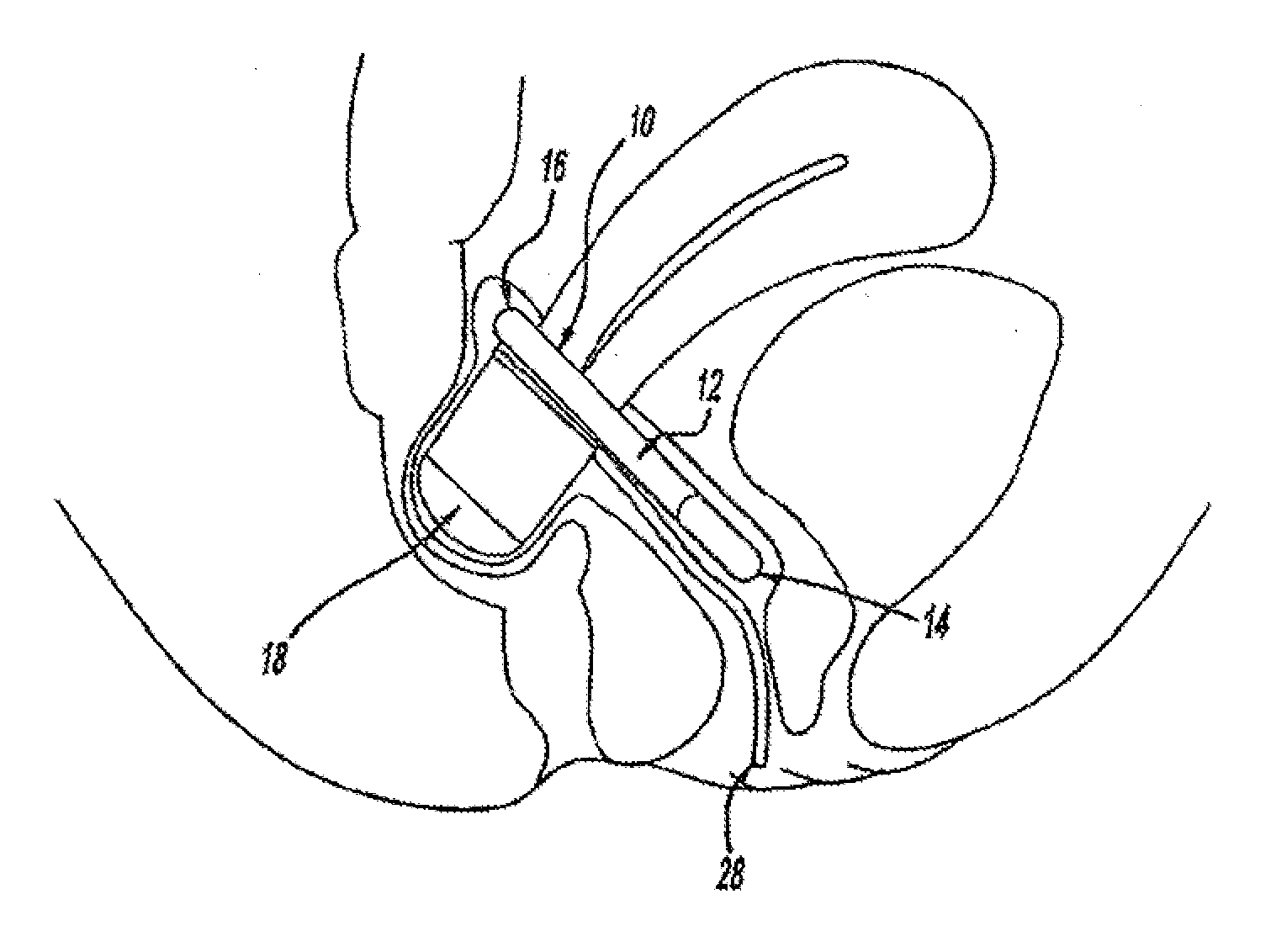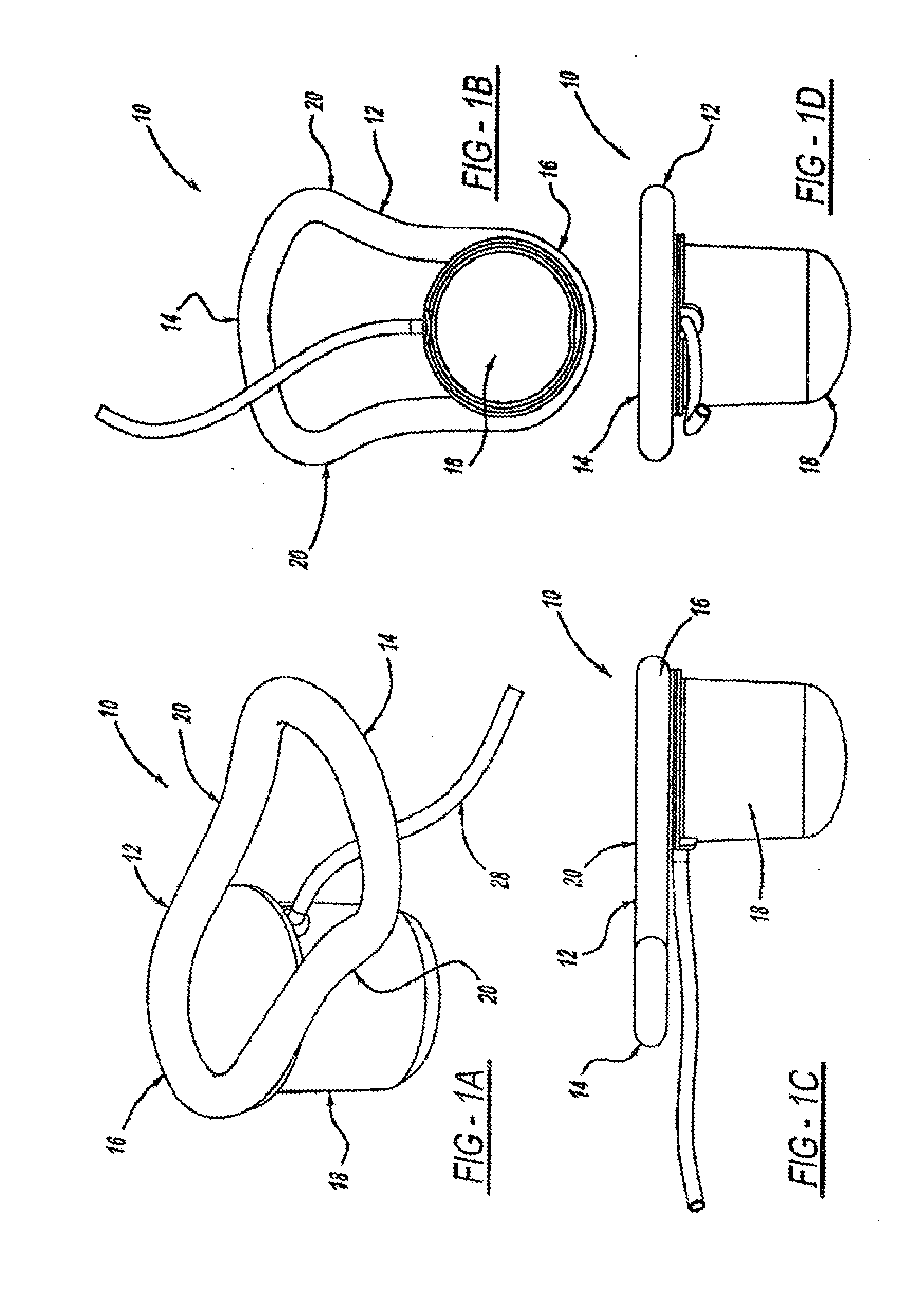Intra-Vaginal Devices and Methods for Treating Fecal Incontinence
a technology of incontinence and intravaginal device, which is applied in the field of intravaginal device and method for treating fecal incontinence, can solve the problems of affecting the quality of life of patients, so as to achieve the effect of maintaining position and stability
- Summary
- Abstract
- Description
- Claims
- Application Information
AI Technical Summary
Problems solved by technology
Method used
Image
Examples
Embodiment Construction
[0110]The disclosure herein relates generally to intra-vaginal devices and methods for controlling the passage of stool. The devices are adapted to at least partially occlude the rectum to control the passage of stool while remaining stable inside the vagina.
[0111]Extensive cadaver testing and human clinical testing and trials were performed in order to understand key attributes for devices that will achieve the desired vaginal bowel control (VBC). First, the ability to achieve rectal occlusion was found to be influenced by a variety of design features that were unanticipated from knowledge of the anatomy. Second, the stability of the device not only during rectal occlusion but also when the device is not occluding the rectum turned out to be a key aspect of device function and required specific adaptations to ensure the device is stabilized when it is not occluding and when it is occluding. Finally, the devices have to be adapted to interact with the tissue in a way that is comfort...
PUM
 Login to View More
Login to View More Abstract
Description
Claims
Application Information
 Login to View More
Login to View More - R&D
- Intellectual Property
- Life Sciences
- Materials
- Tech Scout
- Unparalleled Data Quality
- Higher Quality Content
- 60% Fewer Hallucinations
Browse by: Latest US Patents, China's latest patents, Technical Efficacy Thesaurus, Application Domain, Technology Topic, Popular Technical Reports.
© 2025 PatSnap. All rights reserved.Legal|Privacy policy|Modern Slavery Act Transparency Statement|Sitemap|About US| Contact US: help@patsnap.com



